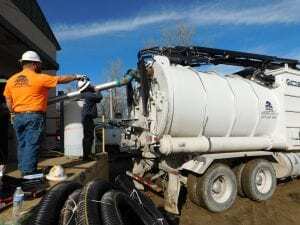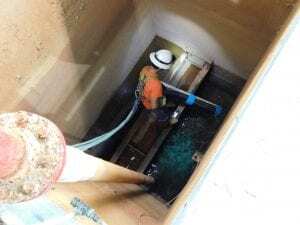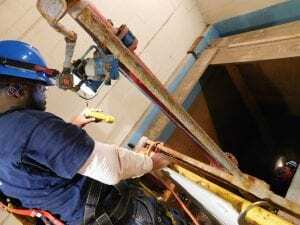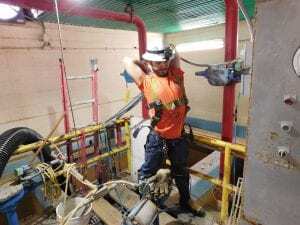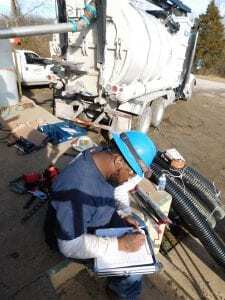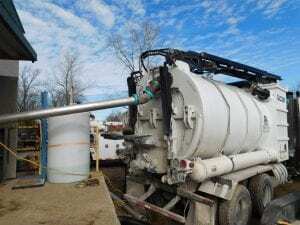Amid a pandemic such as the world is currently facing, the importance of life essentials like food, water and shelter is only heightened. So, it was against the backdrop of the emerging coronavirus outbreak that Environmental Works, Inc., replaced the filter media at a municipal water treatment plant in Kansas. With the job completed in mid-March, residents that relied on the water could return to some semblance of normalcy with other parts of their lives still in such flux.
The job began in early 2020 with the removal of media from the plant’s four cell concrete gravity filter. The media was removed by EWI field technicians using a pair of jackhammers and an ADS hose running to an EWI-owned vac truck. Technicians would don fall protection harnesses, descend a step ladder into one of the four cramped cells and begin the laborious process of removing the filter media that had solidified to the bottom of the cell. The work was backbreaking and tedious, complicated by the fact that much of the media was as solid as sandstone, but the technicians preserved.
Once the media was finally and completely removed, EWI returned to the site to replace the media. Installation of the new media called for four inches of torpedo sand, topped with 12 inches of .5-.7 MM sand, topped with six inches of .35-.5 MM sand, topped off with 12 inches of .8-1.2 MM anthracite. In total, the replacement required 352 cubic feet of filter sand and 240 cubic feet of anthracite, including three inches extra of anthracite for hydraulic grading.
Anthracite is a coal of a hard variety that contains relatively pure carbon. Because of its unique density, it can be used in multi-media filters, and will hydraulically classify and remain above heavier media such as filter sand, providing a prefiltration layer, according to Alliance International.
Much of the new media was installed by hand, but EWI also had a dense phase vac truck at the ready. A dense phase vac truck can push material out as well as pull material in, said Steve FitzGerald, client manager out of EWI’s Kansas City office.
After every layer installed, EWI backwashed the sand to clean and settle the filter. As the backwash drained, a field technician would put on a respirator and harness, descend a step ladder and use a squeegee to sift off the top layer of media foam from the backwash.
“The filter replacement should last 15-20 years,” said FitzGerald.
This is the first filter exchange EWI has completed as a company, he said, adding that he hopes EWI will have the opportunity to take on many more municipal filter replacements in the future.


